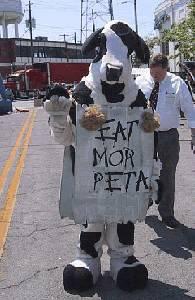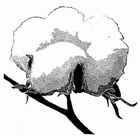I remember when I was young
Being the title of a song (which may or may not have been a cover) by a band called Western Flyer, which featured Matt Taylor from Chain, the first half-decent blues band Australia produced.
Anyhoo, I do remember when I was young, it was about two Fridays ago and JAFA asked me a few questions to do with a photo I posted. Well, I'm over my shits, so I'll answer them now. Those of you who want some light entertainment can wander off elsewhere.
Anyhoo, I do remember when I was young, it was about two Fridays ago and JAFA asked me a few questions to do with a photo I posted. Well, I'm over my shits, so I'll answer them now. Those of you who want some light entertainment can wander off elsewhere.
JAFA, the field (cotton is grown in fields, not paddocks, don't know why. Could be the American influence from the early days of the industries resurgence in the sixties.) is about 110ha, the run length being 750 metres and the fall from head-ditch to tail-drain is roughly 1-in-3000, which isn't as steep as I'm used to, but it seems to work well. This field has a fair sized sand-hole in the centre of it, so that area has been used to satisfy the legislative requirement of having a non-transgenic trap crop of 6% of the total area planted. In English that means we put some Pigeon Pea there.
As this is the first crop put into this field, preparation time is a fairly nebulous number, separating what constitutes preparing for a crop from developing a field is a bit tricky, so I'll make it up and pretend there was a crop in there last year.
Preparation begins directly after picking; the picked -plants are mulched, the 'stumps' are root-cut and the stubble is incorporated into the soil. The hills are busted up to reduce compaction and then pulled back into sets of eight. Usually, a pass is made with a rolling cultivator to bust up the clods and make for a finer tilth. On one of those passes with the tractor, the field is fertilised, either with gas or (preferably, in my opinion) a solid fertiliser. Usually at least one pass with the spray-boom in that time, also.
At a guess, I'd say that it would take about 120 hours of tractor work, not counting maintenance and repair to the irrigation system, throwing syphons, etc.
Now you know.




8 Comments:
I once re-took up smoking on the Friday night before the 1983 VFL Grand Final at the Armadale Hotel in Melbourne whilst watching Matt Taylor And Phil Manning go through their paces.
A fine night despite walking about an hour and a half to get there courtesy of my brother saying "It's just around the corner."
Tony, the last time I saw Matt was in 1992 in the Stupid Arms Hotel in Alice Springs, acoustic solo. Brilliant. For an average guitarist with a voice like someone scraping a shovel along a water tank he goes alright.
and maintenance and repair to the tractor if you let someone like me near it :-)
my cousin runs a sugarcane farm on the north coast. every now and then i turn up there and have a few drinks while he explains farming to me, and my head spins. revenge for me talking computers i spose.
the only bit i understand is crop rotation. every coupla years or so, they plant beans instead of cane, which fixes the soil, and if they harvest them before it rains too much or doesn't rain at all, they get a major bonus and make a truck load of cash. which i think has happened once. north coast and rain. well you never bet on the weather.
the first time i saw rain coming up was on the north coast.
Rat,
we too, sometimes put Faba beans in as a green manure crop, they help to fix nitrogen and encourage the VAM (vesicular arbuscular michorrhiza) to breed up ready for the cotton.
do you make any money on the beans? or are they a throwaway crop. my cousin only makes money on them if they are harvested at the right time. can't remember what sort of beans though...
I've never heard of them being harvested when used as a manure crop, although Hannibal Lecter seemed to think that, with Chianti, they were the perfect accompaniment to human liver. One property I worked on grew seed soya beans occasionally for BGA in Kingaroy as there was no danger of varietal corruption. Other than that, just plough 'em in.
Thanks for the info Dirk and apologies for being remiss in following up my inquiry.
..the fall from head-ditch to tail-drain is roughly 1-in-3000,Would this be natural surface fall for that country ? I understood irrigation required something like 1-in-800. As such, do you have to laser level ?
JAFA
JAFA,
1 in 3000 is very flat. I'm used to 1 in 800 (as you say) to 1 in 1500. I think the boss may have confused himself and 1 in 3000 was the starting point. These days all cotton country is laser levelled. The new software, such as Geostar can even do compound curves and show cut and fill areas on a monitor, which saves up to 60% of the time it takes to level a field. I had a turn of a laser bucket a few weeks ago, a whole big bunch of fun for a little while, but I could see it wearing thin pretty quickly. Still, it was nice to drive about $500,000 around for a while.
Post a Comment
<< Home